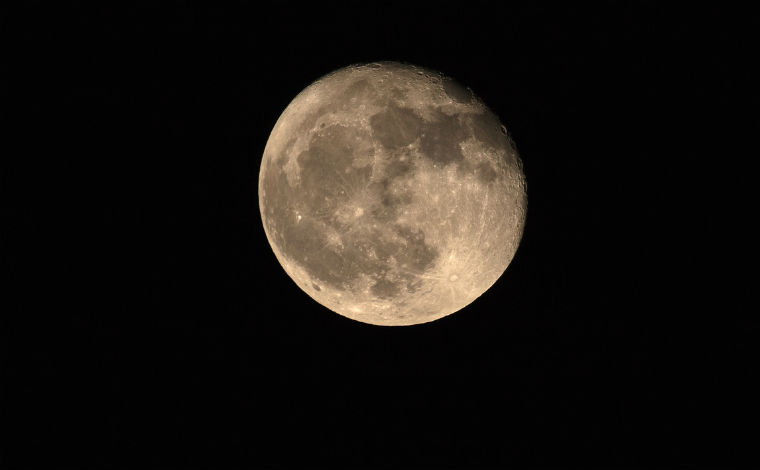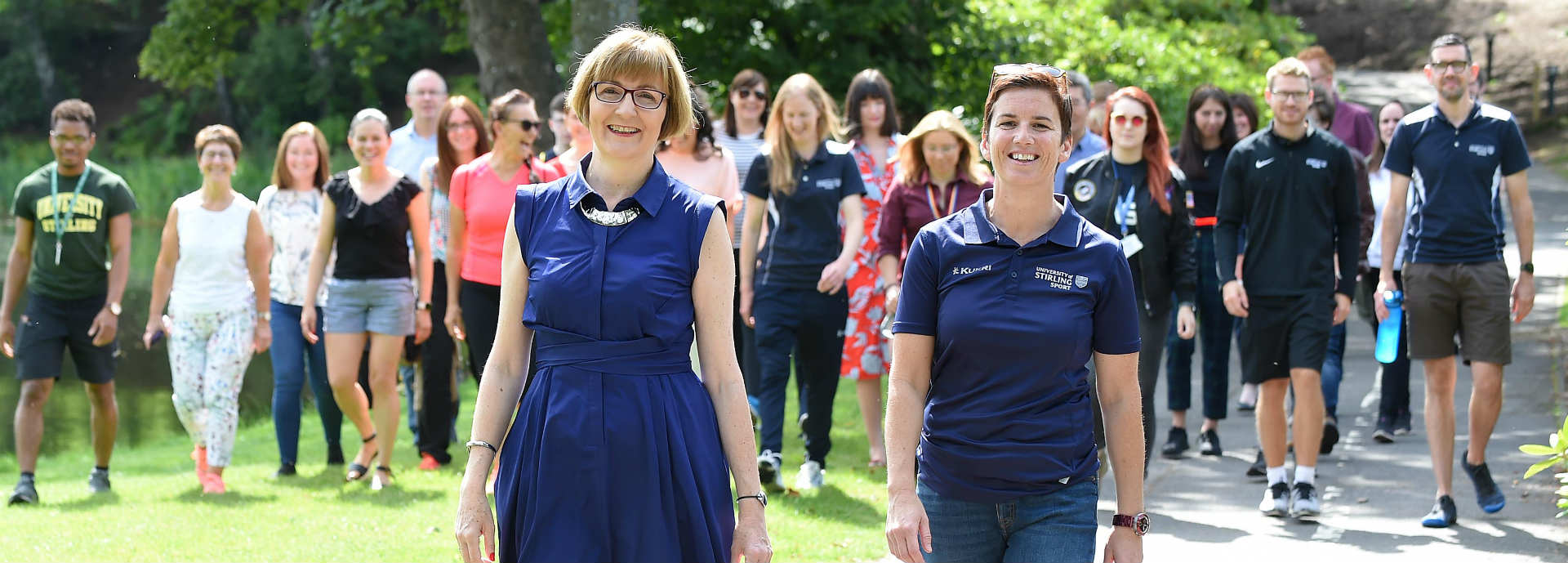Intrepid staff and students at the University of Stirling have completed a monumental challenge to walk almost 240,000 miles – the distance between Earth and the Moon – in less than 150 days.
Organised to mark 50 years since the first Moon landing on July 20, 1969, ‘Walk to the Moon’ was launched by a Scottish Government Minister in February and challenged participants to cover 238,855 miles in just 150 days – just in time for tomorrow’s special anniversary. However, thanks to a phenomenal effort, the challenge was completed on Monday [July 15], with five days to spare.
Participants enjoyed a walk around the University campus earlier today [July 20] before toasting their achievements at a special celebratory event.
The challenge – launched by Joe FitzPatrick, Scotland’s Minister for Public Health, Sport and Wellbeing – was the brainchild of Professor Maggie Cusack, Dean of the Faculty of Natural Sciences, and supported by Cathy Gallagher, Executive Director of Sport.
Professor Cusack said: “We are absolutely delighted to have achieved our goal of 238,855 miles – and five days before the 50th anniversary of the first Moon landings.
“The landing of Apollo 11 on the Moon was a momentous occasion – and as a scientist, I feel it is extremely important that we recognise and remember the significance of this historic achievement.
“As a University involved in some of today’s major international space missions – and as Scotland’s University for Sporting Excellence – we felt it was appropriate to celebrate this special anniversary with our own almighty challenge – and I’m over the Moon we have landed in good time.”

The first Moon landing took place 50 years ago, on July 20, 1969
Ms Gallagher said: “This is an outstanding achievement for the University’s staff, students and the wider local community – with more than 600 people participating in the challenge.
“The level of participation was excellent – with some people contributing thousands of miles by ditching their car for the duration of the challenge; many clocking-up long distances through running and cycling; and others building lunchtime strolls, walking meetings and even dancing into their days in an attempt to ramp up their steps.
“Thanks to the boundless efforts and enthusiasm of all of those involved, we were able to reach the Moon with five days to spare – and we’re already planning to walk back, with the aim of arriving home just in time for Christmas!”
Ms Gallagher added: “Over the course of the last five months, we have witnessed staff and students change their lifestyles to support ‘Walk to the Moon’. We hope that the lasting legacy of the challenge will lead to permanent changes, with people increasing their levels of physical activity to lead more active, less sedentary, and healthier lives.”
Minister for Public Health, Sport and Wellbeing Joe FitzPatrick said: “Congratulations to the staff and students at the University of Stirling for completing their walk to the moon challenge which covered a staggering 238,855 miles.
“I understand the level of participation was excellent as the challenge was completed five days early. It is my hope that everyone taking part in this challenge enjoyed themselves and will continue to make walking a regular pursuit contributing to our vision of making the population of Scotland more active, more often.”
Staff and students recorded their mileage using a smartphone app that deducted each individual’s contribution from the overall total – which equated to around 478 million steps.
More than 25 ‘Moon Champions’ were appointed to encourage and sign-up walkers across the University’s faculties, professional service areas and student population – with the aim of boosting activity levels and, consequently, the health and wellbeing of both staff and students.
The challenge generated a great deal of social media interaction, with participants posting images and videos from their walks – including contributions from Prague, Quebec, and China.
The completion of the challenge came as Japanese-led space mission Hayabusa2 – involving University of Stirling geophysicist Dr Axel Hagermann – announced an important discovery in its exploration of the primitive asteroid Ryugu. The study – published in the journal Nature Astronomy – found that small fragments of material from C-type asteroids are too fragile to survive entry into the Earth’s atmosphere, explaining why meteorites of this type are rarely discovered here.

